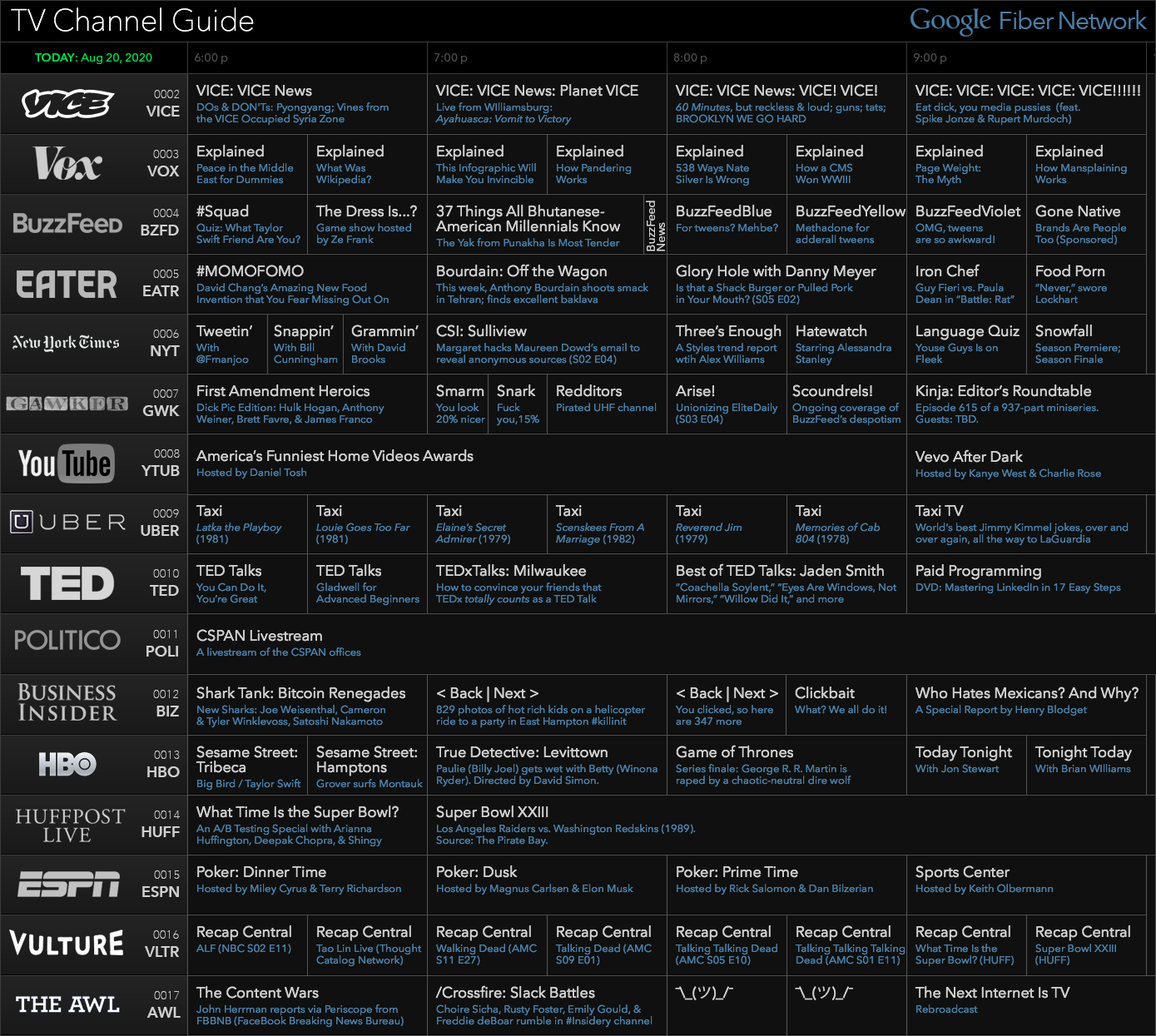All About Apollo Group Tv
All About Apollo Group Tv
Blog Article
Apollo Group Tv Things To Know Before You Get This
Table of ContentsThe Only Guide to Apollo Group TvApollo Group Tv for BeginnersA Biased View of Apollo Group TvHow Apollo Group Tv can Save You Time, Stress, and Money.
In this scenario, as opposed to having three-minute industrial places throughout a 30-minute tv program, TV programming may alter to one where a customer will certainly be called for to have a regular monthly registration, to make sure that they cen view targeted banner ads. This kind of advertising and marketing currently occurs on the web, and the amount of data television business accumulate enables them to do similar.Explain the influence of sponsors on program content. Define the significant patterns among the broadcasting and cable networks. When television remained in its early stage, producers modeled the brand-new tool on radio. Popular radio shows such as police dramatization Dragnet and western cowboy collection Gunsmoke were adapted for television, and brand-new television shows were funded by solitary advertisers, equally as radio programs had been.
Today, the television sector is much a lot more complex. Programs are funded by several advertisers; shows is managed by major media empires; and the 3 major networks no more dominate the airwaves yet instead share their viewers with countless cord channels. Numerous elements make up these patterns within the industry, consisting of technological growths, federal government regulations, and the creation of brand-new networks.

How Apollo Group Tv can Save You Time, Stress, and Money.
Developed in 1969, (PBS) developed out of a report by the Carnegie Commission on Educational Television, which examined the function of instructional, noncommercial tv on society. Public television was additionally planned to offer global accessibility to tv for audiences in rural locations or visitors who could not manage to pay for personal tv services.
The duration between 1950 and 1970 is traditionally acknowledged as the. Other than a tiny portion of airtime controlled by public television, the three major networks (referred to as the Big 3) controlled the tv industry, collectively accounting for greater than 95 percent of prime-time viewing. In 1986, Rupert Murdoch, the head of international firm Information Corp, released the Fox network, testing the dominance of the Big Three.
Targeting young and minority target markets with shows such as Buffy the Vampire Slayer, Moesha, Dawson's Creek, and The Wayans Bros., the brand-new networks wished to attract stations away from their old network affiliations. Instead than duplicating the success of Fox, UPN and WB had a hard time to make an effect. Not able to draw in lots of affiliate stations, the two fledgling networks reached fewer households than their larger rivals because they were unobtainable in some smaller cities.
This decision led the way for the development of cable television motion picture channels, contributing to the exponential development of wire in the 1980s and 1990s. apollo tv group. Additional deregulation of cable television in the 1984 Cable Television Communications Policy Act got rid of restrictions on their explanation cable television rates, enabling operators to bill what they desired for cord services as long as there was effective competitors to the service (a standard that over 90 percent of all cable markets can satisfy)
An Unbiased View of Apollo Group Tv

Having produced the initial "superstation," Turner expanded his realm by starting 24-hour information network CNN in 1980. At the end of the year, 28 nationwide programming services were offered, and the cord change had actually started. Over the following years, the sector underwent a period of rapid growth and popularity, and by 1994 audiences might pick from 94 fundamental and 20 costs wire solutions.
Figure 9 - https://www.blogtalkradio.com/apollogtv01.16 Enhanced competitors from wire channels has created a stable decline in the networks' target market ratings. During the 1950s, the expense of generating a single television show boosted as programs became longer and production prices rose. Sponsorship on network television shifted from solitary sponsorship, in which a program was totally sustained and produced by one advertiser, to several sponsorship, in which marketers bought 1- or 2-minute areas on the show
Choose one of the Big Four networks and publish out its regular programming routine. View the network's prime-time programs over the program of a week, keeping in mind the target market for each show.
Rumored Buzz on Apollo Group Tv

Direct TV, commonly described as traditional broadcast TV, includes cord and satellite tv. It's called "straight" because content follows an established programs routine, unlike on-demand material which the private customer chooses to enjoy based on their very own preferences and timetable. So, when you ask, "What is direct television?", consider it as the timeless means of watching TV that has actually been around for years.
Report this page